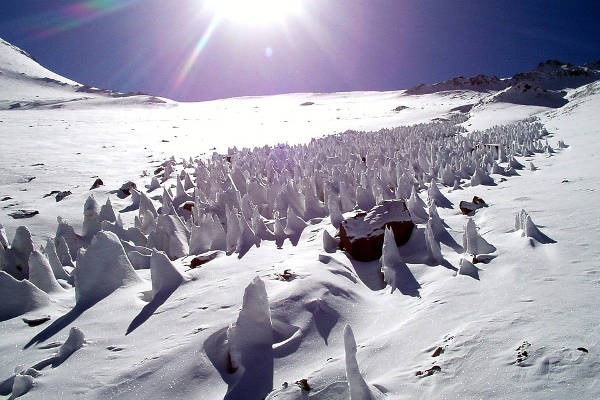There are three main routes on Aconcagua that one can use to reach the Roof of the Americas. These are the Normal Route, the Polish Traverse Route and the Polish Glacier Route.
There are variations of these routes, however, these are often far more technically difficult and usually only attempted by experienced mountaineers.
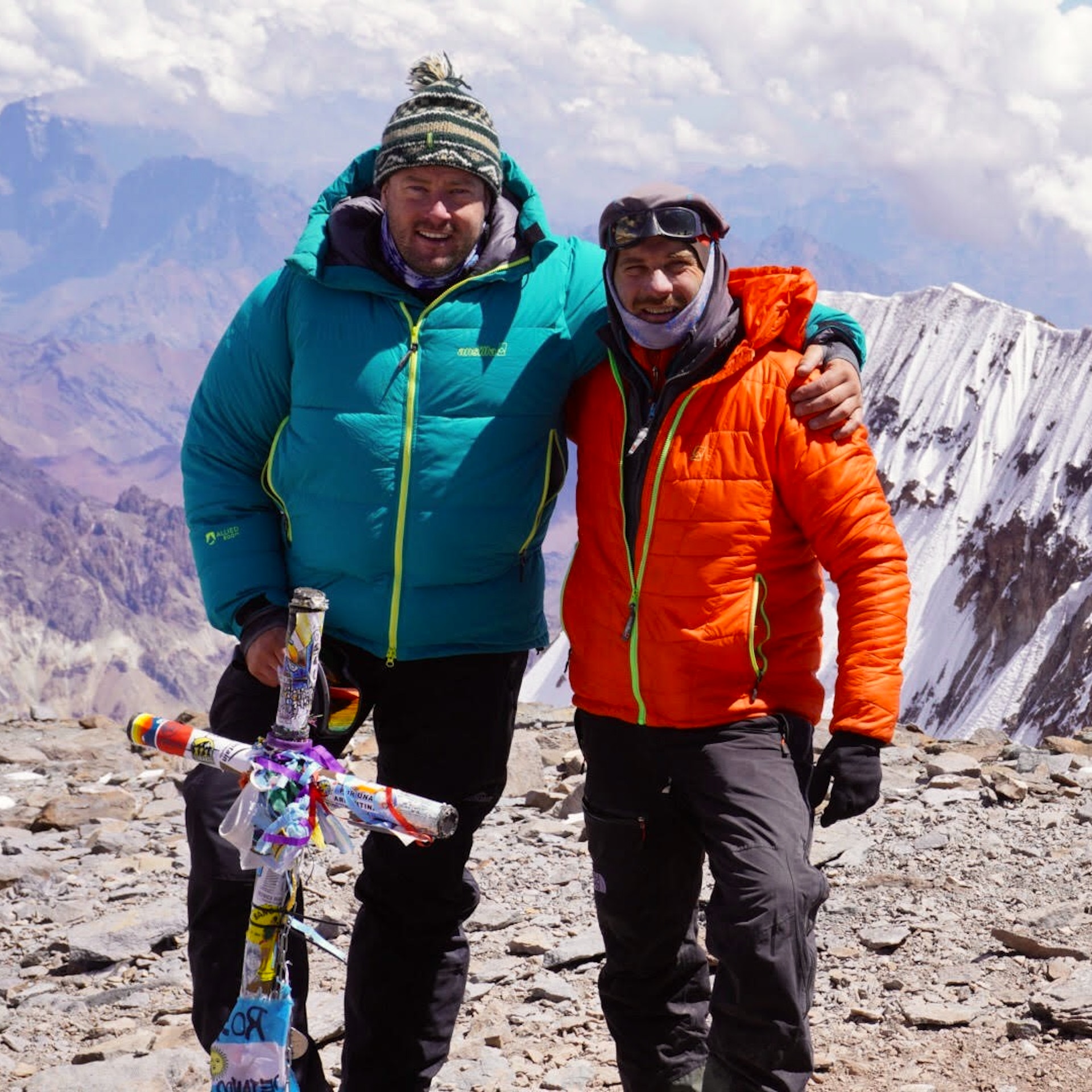
Join an Aconcagua Climb
Book with our recommended local guide
Aconcagua Trekking Routes Map
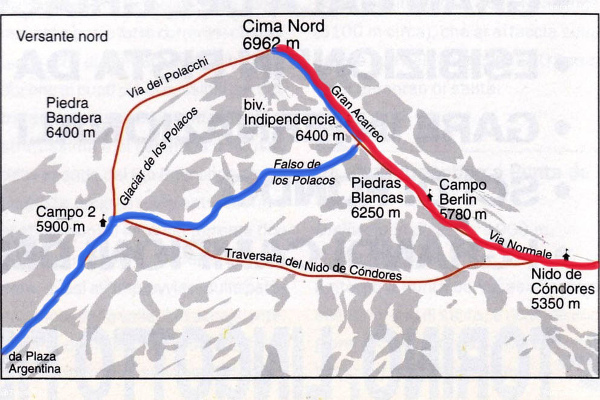
The map above clearly demonstrates the three main climbing routes on Aconcagua. The Normal Route takes the Northwest ridge straight to the top. The trail requires no technical climbing and is often considered a ‘trekking’ route. None the less, the altitude is still very high and makes the trek quite dangerous. Crampons are occasionally needed as are ice axes.
As can be seen above, both Polish routes leave from the opposite eastern side of the mountain. The traverse route is 20% longer than the direct route and traverses around the mountain before joining the Normal route roughly a 1,000 meters below the summit. This route also requires no technical climbing, however, it is considered slightly more difficult than the Normal route as crampons and ice axes are often needed on the upper slopes.
The Polish Glacier Route is for more experienced climbers. The route takes a direct path up the east side of the mountain over the famous ‘Polish Glacier’. Unlike the other two routes, this route requires ice climbing, ice axes and short roping.
Aconcagua Route Summaries
The Normal Route
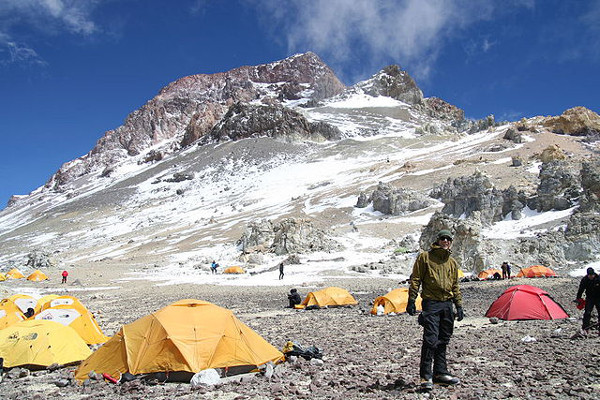
The Normal Route was first climbed in 1897 by Matthias Zurbriggen. Since then it has become hugely popular, mainly due to it being considered the highest ‘trekking peak’ in the world. Although this is true, the Normal Route should not be underestimated as less than half of all attempts end in failure. The altitude is often overlooked by climbers who simply focus on the notion that it’s a trekking peak with no technical difficulty.
The route typically takes 18 days and is most frequently climbed in the peak season from November to March. Even in the peak season temperatures get well below zero near the summit and winds often reach in excess of 50 mph. Combined with the altitude, the climb is actually quite difficult.
Generally trekkers will not require ropes or ice axes on this route, however, in extreme conditions it has been known to happen. Most climbers use trekking poles and crampons near the summit.
The Normal route begins from the Lower Horcones Valley and takes the main path leading all the way to Plaza del Mulas (4260m). This is the first base camp. There is little vegetation and the land is dry, cold and arid. From base camp there are a further three high camps along the Normal Route:
The trail up is rocky and is often covered in loose scree. Dust is often a problem and you’ll need plenty of water. Summit day is a long and arduous trek of over 12 hours. Even though this is a trekking route, if you are not physically fit and acclimatized to the high altitude, you’ll most likely struggle to make the summit. For a full summary and itinerary, please click here.

Join an Aconcagua Climb
Book with our recommended local guide
Polish Traverse Route
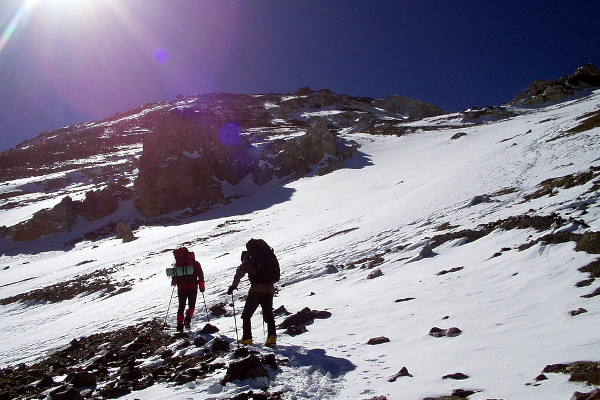
The Polish Traverse Route is the second most popular route on Aconcagua. The route takes roughly 18 days depending on weather and begins on the east side of the mountain. The route then slowly traverses around the mountain before joining the Normal Route near the summit.
The route is slightly more difficult than the Normal route and requires some very minor technical climbing. This is because of a short and fairly steep snow section that climbers must negotiate before joining the Normal Route. Crampons are usually needed as are ice axes. Climbing ropes are rarely needed except in bad weather.
You approach the route from Penetentes. It usually takes three days to reach the first base camp and you’ll be trekking along mule trails. Like the Normal Route, rock and scree dominates the lower reaches of the trek. You’ll cross 5 rivers in total on your journey to base camp. The last of these rivers can be difficult to cross after heavy rain. You may be required to use a mule or link arms.
After negotiating scree slopes and rocky trails for several days you join the Normal Route just below the Indepencia camp. From there you make for the summit which is a long and hard trek on snow and ice. You may need to go slow and wear crampons for grip, particularly in winter.
For a full summary and itinerary please see our detailed page here.
Polish Glacier (Direct) Route
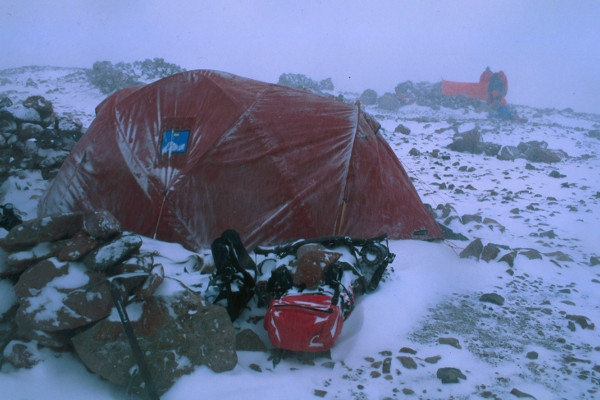
This is the most difficult of the three popular routes. Unlike the previously mentioned routes, the Polish Glacier Route does require technical climbing skills. Depending on weather, the route usually takes 18 – 20 days and takes the direct route up the east face of the mountain over the Polish Glacier.
Only experienced climbers should attempt this route as steep ice climbing is required. You’ll be using ice axes, crampons and ropes to negotiate the glacier. You’ll need to be very physically fit. Heavy snow is common and the weather can become quite severe.
Like the Polish Traverse, the approach is from Penitentes. From base camp is a trail that leads over a glacier to the base of a large scree slope. The route from base camp to camp 1 and 2 is not difficult and you’ll get great views of the Polish Glacier up ahead.
Once on the glacier itself you’ll need to watch out for crevasses, hidden summits and deep snow. Summit day takes roughly 14 hours and is a hard slog. You begin by climbing a steep ice slope before negotiating a 55 to 60 degree narrow gully where the entire Polish glacier lies below your feet. From the gully you reach the Summit ridge where it’s an easy trek to the summit.
For more information and a detailed itinerary, please click here.

